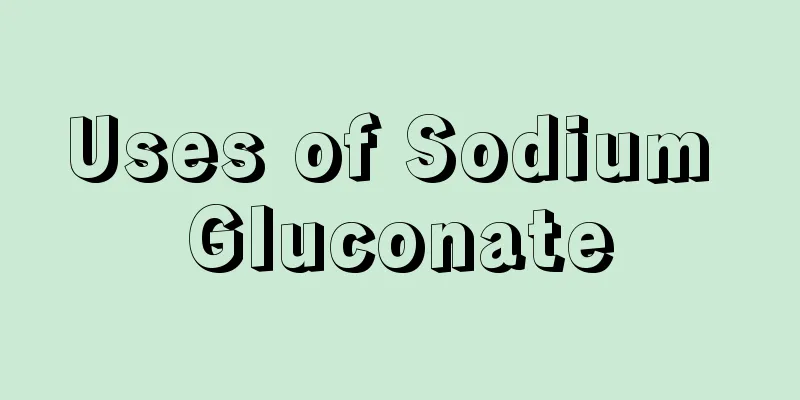Uses of Sodium Gluconate

|
Sodium gluconate is an industrial raw material and cannot be directly used by the human body. In industry, sodium gluconate has many uses and we can see it in many scenarios. When it comes to purchasing sodium gluconate, many purchasing personnel need to have many years of experience to complete this task. Sodium gluconate is so widely used, so what are the uses of sodium gluconate? 1. Sodium gluconate as a water reducer By adding water reducing agents, the water to cement ratio (W/C) can be reduced. The following effects can be achieved by adding sodium gluconate: 1. Improve workability. When the water to cement ratio (W/C) remains unchanged, adding sodium gluconate can improve workability. At this time, sodium gluconate acts as a plasticizer. When the amount of sodium gluconate added is below 0.1%, the degree of improvement in workability is proportional to the amount added. 2. Improved strength: When the cement content remains the same, the water content in the concrete can be reduced (i.e. W/C is reduced). When the addition amount of sodium gluconate is 0.1%, the amount of water added can be reduced by 10%. 3. Reduce cement content The water and cement content are reduced in the same proportion, and the W/C ratio remains unchanged. At this time, sodium gluconate is used as cement reducer. In general, two aspects are important for the performance of concrete: shrinkage and heat generation. 2. Sodium gluconate as a retarder Sodium gluconate can significantly delay the initial and final setting time of concrete. When the dosage is below 0.15%, the logarithm of the initial solidification time is directly proportional to the dosage, that is, if the dosage is doubled, the initial solidification time is delayed ten times, which extends the working time from a few hours to several days without compromising the strength. This is an important advantage especially on hot days and when the storage time is longer. 3. Used as a special cleaning agent for glass bottles Beverage industry, food industry, brewing industry use hundreds of millions of glass bottles every day, such as soda bottles, beer bottles, milk bottles, can bottles, soy sauce bottles, wine bottles, etc. Cleaning is a very important task, and the formulation of cleaning agents is a difficult technical task. At present, there is no ideal medicine in China. The main problems are: weak descaling ability, easy to clog the nozzle and pipeline of the bottle washing machine; poor descaling ability for bottle labels and bottle neck rust; trace residues after washing are not safe for consumption (such as phosphate residues); washing water discharge becomes a public nuisance (cannot meet national standards). If sodium gluconate is used as the main component in the formula of its glass bottle cleaning agent, the above problems can be easily solved. (Large-scale experiments were conducted in Shanghai Soda Factory and Shanghai Brewery in the 1980s, and there are appraisal certificates.) This application has not yet been developed in China. If a market is formed, the potential is huge. |
<<: Shelf life of dry red wine
>>: Sugar ratio of homemade wine
Recommend
What to eat after a high fever
People often suffer from symptoms of colds and fe...
Intrahepatic cystic lesions
Intrahepatic cystic lesions are a common liver di...
How to identify genetically modified corn
There may be many kinds of genetically modified f...
Hepatic artery angiography helps diagnose early liver cancer
Hepatic artery angiography is the most sensitive ...
What are the treatments for hiccups
Hiccups are actually what we often call burps, bu...
Who is prone to prostate cancer? These 3 types of men are the primary targets of prostate cancer
Prostate cancer is one of the malignant tumors wi...
Genetic hypertension needs to be treated like this
From a clinical perspective, there are many cause...
Oily floating matter in urine
Many people will observe the condition of their u...
What are the dietary treatments suitable for bone cancer patients
The so-called diet therapy refers to the use of f...
TCM diagnosis method for osteosarcoma
Osteosarcoma mostly occurs in adolescents. It is ...
How much does the 4-valent cervical cancer vaccine cost
The price of the 4-valent cervical cancer vaccine...
What targeted drugs are better for lung cancer brain metastasis? These drugs all have good therapeutic effects
The targeted drugs that lung cancer patients with...
How to completely cure pituitary tumors
Pituitary tumor is a brain tumor disease with a h...
What are the symptoms of advanced ovarian cancer
What are the symptoms of advanced ovarian cancer?...
The 10 most harmful things to your body
1. Hair is most afraid of hair dye Benzene compou...









